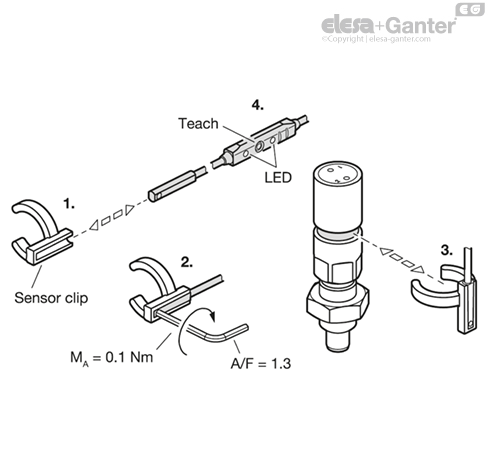GN 817.7
Types
- Type D: Pneumatically double-acting, protrude / retract
- Type A: Pneumatically single-acting, retract by spring force
- Type E: Pneumatically single-acting, protrude by spring force
Coding
- OP: Without position query
- BS0,4: Position query on both sides, with plug, cable 0.4 m
Stainless steel AISI 303
Plunger pin surface hardened
Rod seal
Polyurethane PUR
Piston seal and O-ring
Acrylonitrile butadiene rubber (NBR)
Magnet
Neodymium, iron, boron (NdFeB)
Sensor
- Housing
Polyamide (PA), black
- Cable and plug
Outer sheath polyurethane (PUR), black
Sensor clip
Polyacetal (POM), black
Lock nut ISO 8675
Stainless steel, AISI 304
LOOKING FOR SOMETHING:
Feeling overwhelmed with what product to choose?
Don’t delay, give OIC a call and talk to us about your industrial application. Our aim is to help your business choose the right Elesa+Ganter element for the function you need. Whether you need to clamp, close, connect, control, level, manoeuvre, measure or set. OIC has an Elesa+Ganter machine element to fit your need.
We want to find out about your industrial application need and where we can help. Our contact details are below.
